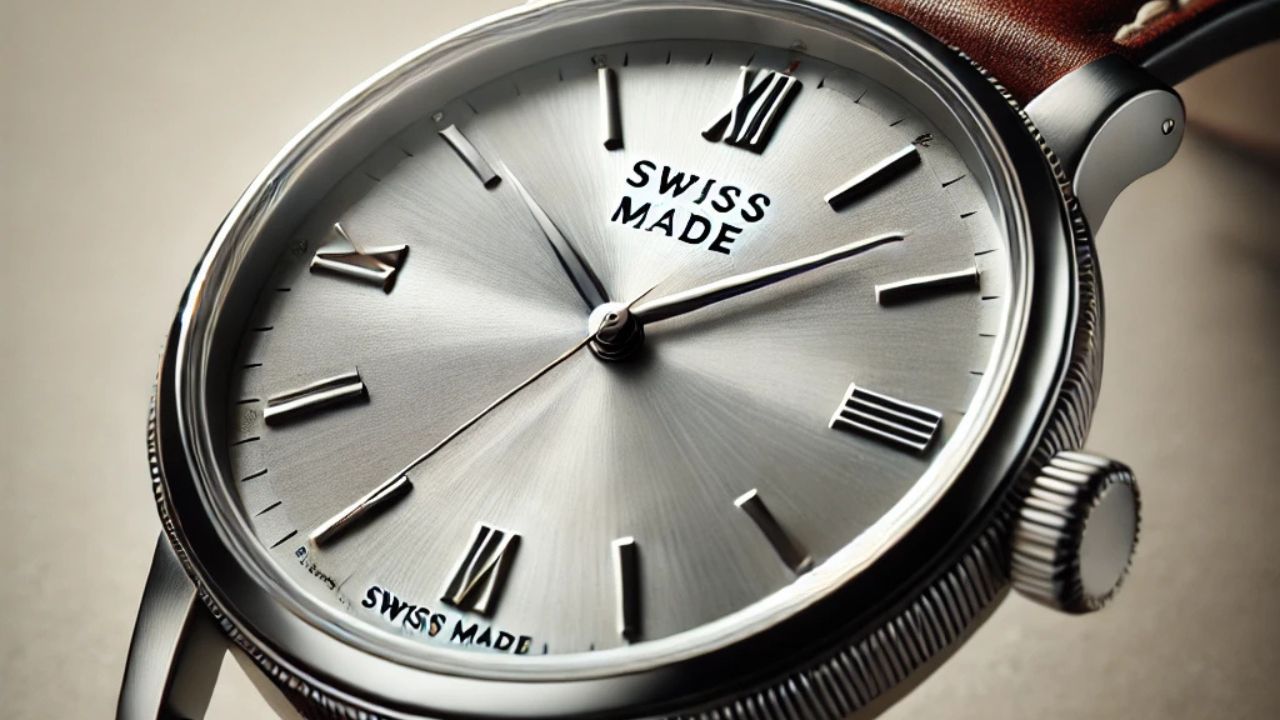
The “Swiss Made” label is synonymous with quality, precision, and tradition when it comes to watches, but did you know that this mark of origin doesn’t exactly guarantee what many believe?
Here’s what you really need to know about what it means for a watch to be “Swiss Made.”
What is required for a watch to be considered “Swiss Made”?
For a watch to receive the “Swiss Made” label, it must meet certain legal requirements established in Switzerland. However, these requirements are more flexible than most consumers assume. The basic rule is that at least 60% of the watch’s production value must come from Switzerland, and the movement (the internal mechanism) must be assembled in the country. Additionally, the final quality control must also be conducted in Switzerland.
This means that many of the parts that make up the watch, such as the case, strap, and other components, can be manufactured in other countries. In practice, this can include parts produced in places like China, Japan, and other countries with lower production costs. This system, which allows parts of the watch to be made outside Switzerland, raises questions about the true extent of the “Swiss Made” label.
The relationship between tradition and innovation
The “Swiss Made” label is undoubtedly associated with some of the most prestigious and expensive watch brands in the world, such as Rolex, Patek Philippe, and Omega. These brands still uphold traditional watchmaking craftsmanship, with many of their watches being handmade in Switzerland with precision and meticulous design. However, there are also more affordable brands that place the “Swiss Made” label on their watches while outsourcing parts of the production to other locations.
The key issue here is the difference between “traditional Swiss Made,” which preserves the legacy of artisanal quality, and “Swiss Made” that is more focused on meeting legal and commercial requirements without necessarily reflecting the expected level of excellence.
The impact on the market
This flexibility in defining the “Swiss Made” label also affects consumers. Many buyers believe that by choosing a “Swiss Made” watch, they are getting a product that is 100% Swiss quality, but this is not always the case.
The label has become so deeply ingrained in popular perception that it is now synonymous with luxury, precision, and high performance, which can be misleading for consumers who are unaware of the nuances of this classification.
Over the years, more discerning consumers have become increasingly aware of this distinction and seek more information about the manufacturing process, the materials used, and, most importantly, the brands that genuinely uphold the high standards the “Swiss Made” label suggests. This has led to a rise in the number of brands opting to manufacture watches entirely in Switzerland to meet the growing demand for transparency and quality.
A new definition of “Swiss Made”
If you are considering purchasing a watch with this label, it’s important not to be swayed by the reputation of the label alone. Today, the market demands greater transparency from brands, and many consumers expect companies to clearly state which parts of the watch are made in Switzerland and which are sourced elsewhere. The “Swiss Made” label can still be a mark of quality, but it is no longer an absolute guarantee that every part of the watch originates from Switzerland.
In short, “Swiss Made” remains an important symbol in the watch industry, but it’s necessary to conduct a more in-depth investigation before relying solely on this label. The most important thing is to understand the true value behind the watch you are purchasing to ensure that what is being promised aligns with your expectations and quality standards.
This content was created with the help of AI and reviewed by the editorial team.

